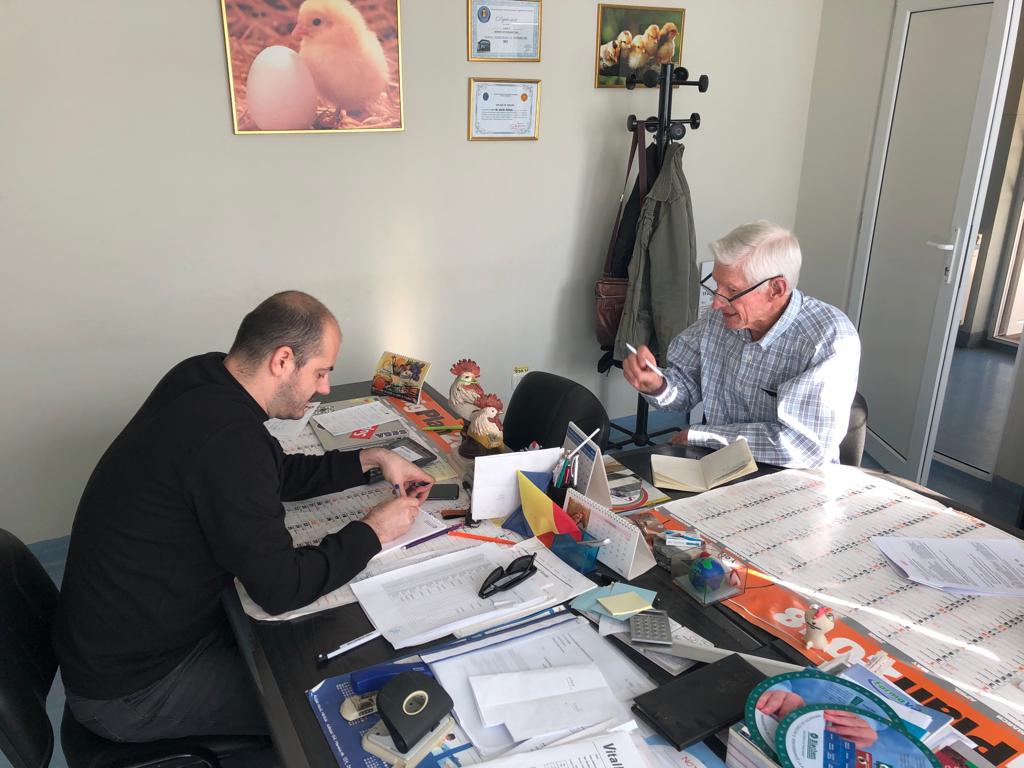Romanian Customers Receive Access to High-Profile Experts, Quality Information, Latest Research Work in Poultry Nutrition
- Category:
- Animal Utilization
- General News

For specialists involved in today’s poultry and feed production, nutritional knowledge is power. The poultry nutritionist needs constant access to high-quality information and the latest research work to increase the quality of feed while reducing price.
In an effort to further support southeast European customers, USSEC invited Dr. Craig Coon, poultry scientist and nutrition professor from the University of Arkansas, to Romania to visit and work with end users there. Five key Romanian poultry companies were visited in November 2019 to discuss U.S. Soy in relation to broiler nutrition and the latest research findings in broiler breeders nutrition.

Field visits to poultry farms and feed mills allowed practical discussions and the dissemination of the latest information from the University of Arkansas’ poultry research. Particular attention was given on how to optimize and tap into U.S. soybean meal’s potential to help chickens better utilize its amino acids advantage and improve poultry performances with the final goal to ensure the economic and environmental sustainability of the Romanian poultry industry.
Broilers have a high demand for amino acids and thus, need a protein source high in digestible amino acids. A recent Romanian feed industry survey results indicates that typical amounts of soybean meal added are 35 percent in broiler starter feeds, 25 percent in grower feeds and 22 percent in finisher diets. Based on the same source, the soybean meal cost share from total raw materials costs is 42 percent.
“In this context, soybean meal plays a crucial role in optimizing performances of broilers,” Dr. Coon emphasized. “As such, U.S. Soy’s consistency in nutrient content, its significant contribution to high-energy broiler diets, and its ready availability year-round makes it a superior value ingredient because no other competing origin or common plant protein feedstuff exceeds U.S. soybean meal’s digestible amino acids content.”

Dr. Coon also presented his group’s latest broiler breeders research and how to turn developing better feeding strategies for feeding the pullet and breeder for maximum production of quality chicks into practice. He also discussed other challenges such as eggshell quality, bone strength, and skin myopathies from lack of appropriate nutrition during the meetings with the Romanian poultry nutritionists.
“Soybean meal is a raw material with significant variation in crude protein composition, digestibility and trypsin inhibitor levels,” added Dr. Coon. “That’s why it is important to consider multiple factors when formulating poultry feeds. Diets should be formulated on the most accurate digestibility measures basis possible and the use of statistical tools to manage variation and management of the anti-nutritional factors are ensuring poultry to reach their full genetic potential and maximum productivity.”

Given the attractiveness and importance of the poultry sector for the country’s animal farming industry and the reputation of high-quality broiler meat and table eggs produced by the integrated companies using cutting-edge technologies, the Romanian poultry industry is fast growing and is constantly updating to the latest EU standards and market conditions.
The ongoing expansion of the poultry sector requires constant improvements and updates of knowledge for the poultry nutritionists and farm managers. USSEC plays a pivotal role in facilitating access to high profile experts and state of the art information, which is crucial for the further development of a strong and profitable poultry industry. Romanian customers are appreciative of the technical support from USSEC, helping the companies to implement the latest advances in science and enable better performances for poultry.